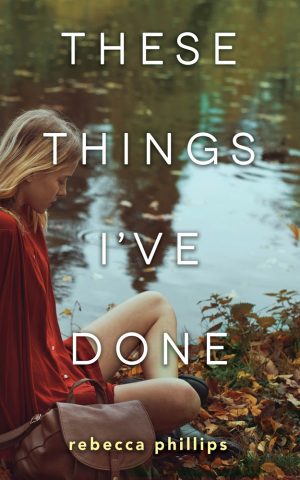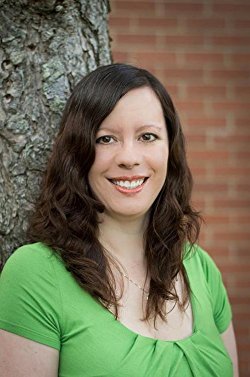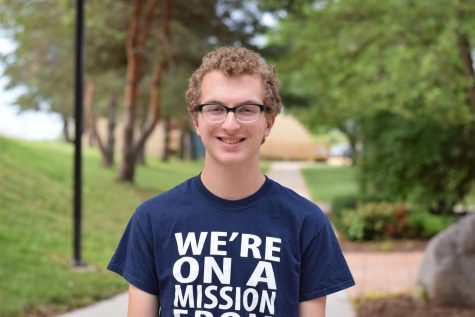What I’ve done: a “These Things I’ve Done” review
Rebecca Phillips’ newest contemporary novel both breaks beyond the stereotypical young adult contemporary mold and falls back into it.

Young adult contemporaries are mostly a predictable field. If you want books that have girls coming to terms with events in their lives, sweet and safe romances and brief glimpses into heavy issues, you’re in the right place. I value them as comfort reads, pillows to rest upon whenever I finish something edgy and out of my comfort zone.
A look back at Rebecca Phillips‘ other novels shows her contemporaries have a bit of edge laced within them. This is my first novel from her, but her past work has angled toward darker themes than lighter contemporaries from other authors. This was the one that captivated my attention, a story about a girl returning to town a year and a half after her best friend died while flashing back to the events leading up to that horrific accident. Granted, the idea of another best friend’s brother relationship sounded tried and true, but the beautiful cover and the delicacy that would have to be shown between the past and present flashbacks had me intrigued.
Overall, Phillips does a solid job with “These Things I’ve Done.” It’s exactly what you would expect from a realistic fiction release: a girl trying to find herself amidst a budding relationship. While it’s nothing new, above average writing, genuine effectiveness in nailing emotion and inverting a lot of the stereotypes help make this more interesting. However, issues still arise, namely with repetitive drama and a cheesy romance that while sweet ends up bringing this back into familiar territory. But thanks to the flashback chapters and the strengths listed above, Phillips tries her best to make this landscape her own. It’s effective, for the most part.
The protagonist, Dara, is both hit and miss. The novel is centered around her return to Hyde Creek after a year away. Her best friend, Aubrey, died after a pickup truck ran her over. Dara feels responsible. If she hadn’t pushed Aubrey to the curb, she wouldn’t have died. Wracked with guilt and the fact her classmates believe she deliberately killed Aubrey, Dara has become a statue, a relic of who she once was. She isn’t the brave girl who accepted the dares her classmates threw at her anymore. While her self-pity sometimes defines her character and gets repetitive, it’s still gripping. Her self-esteem is so low to the point where she doesn’t think she deserves any happiness. Her family situation is rough too, with a stoic dad, a mom who wants to rely on her daughter’s therapist and a little brother who doesn’t know how to reconnect with his sister. These little details keep the reader going.
Dara reconnects with Aubrey’s younger brother, Ethan, throughout the course of this book. Rather than have the protagonist fall for the best friend’s hot older brother, we have the opposite this time around. Kudos to Phillips for trying something else. It’s an awkward relationship because Dara and Ethan grew up through most of their adolescence together. We see this in the past chapters, alongside a plot where Aubrey and Dara both fall for a cute junior guy who ends up dating Aubrey. But I love how nice and unapologetic Ethan is, even if his newfound anger gets the better of him. He’s forgiving of Dara to a fault. He never really understands why she holds so much weight on her shoulders, but he wants to show her she deserves the love genuine people are giving her.
I feel like some elements of his character are similar to main male love interests in his vein, like his outbursts of anger, his transformation from adorable to hot and his love for playing music in a band. He also has a really irrelevant girlfriend who barely shows up and is just as disposable. But the band thing is alleviated by some interesting personalities within the group.

Moving past that, I really like the plotline of the past chapters. Even though it revolves around boy drama, it feels gripping to read it in a different tense from present and to have it be self-aware. Dara knows her crush on Justin is wrong because her best friend really likes the guy, even though his friends are jerks and Ethan doesn’t trust him. She wants Aubrey to be happy. and that’s very selfless of her. It’s also cool to see sophomore Dara be gutsy, particularly in a scene where she walks across the monkey bars barefoot. It provides a nice contrast with the current her, who’s hollowed out and struggling with the bullying of her classmates that makes her sink lower into the quicksand.
However, there are some setbacks with this title. As I’ve mentioned before, Dara’s inner turmoil gets recursive fast, and by the end of the book it’s more annoying than empathetic. The romance gets very cheesy at its climax, trying to juggle both subtlety and explicitness. Lastly, a definite ending to some of the subplots is heavily lacking, particularly Aubrey and Ethan’s cutthroat parents and the identity behind someone who was slipping notes into Dara’s locker and making her life hell. We’re only left to guess.
Beyond that, “These Things I’ve Done” is fine. I won’t deny it’s very safe, with an all white and straight cast and a formula we’ve all read before. But Dara’s emotional state, the tender moments of her relationship with Ethan and the reversal of some of the tropes found in YA contemporaries may make this worthwhile to fans of the genre. It’s a decent read that’s perfect to fall back into when you need something that feels comfortable.
Your donation will support the student journalists of West High School. Your contribution will allow us to purchase Scholarship Yearbooks, newsroom equipment and cover our annual website hosting costs.

This is Luke's first and only year as a member of West Side Story. He'll be kept busy with anchoring, editing and reporting, but he's gonna have fun while...


